Our editors share a few of the most memorable books they read in 2022.
Michelle Bailat-Jones, translations editor
Three recent(ish) translations stood out from the rest of my reading this year. The original languages and story cultures are as different as can be—Kannada, Arabic, Icelandic—but they remain connected for me on account of each writer’s sensitivity to the human experience, especially where trauma and loss are concerned, but also because of how a major city figured into the overall narrative: Mumbai, Beirut, Reykjavík. Funnily enough, these three cities sit almost equidistant from each other and are all important harbor cities with long histories—and something of this creeps into each book. But more than anything, all three titles involved a grim appreciation for the absurd, sneaking a bit of humor into otherwise dark and unsettling stories, but the different writers’ awareness and acceptance of the absurd also managed, with what felt like deep empathy for their characters, to never embrace cynicism.
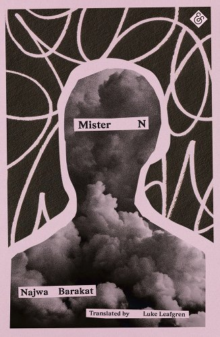
In May, the always marvelous And Other Stories published Mister N by Najwa Barakat, translated from the Arabic by Luke Leafgren (And Other Stories, 2022). What an incredible book this is—twisty, challenging, haunting and haunted. It’s about Beirut and a novelist, the titular Mister N, but it’s very difficult to say more about this book, in terms of its plot. Not only are there layers to this story, there is also a very important twist. It’s the kind of book that invites you to start all over again once you’ve turned the last page, not only because of that revelation but also because the narrative is so intricately constructed out of symbols, echoes, resonances. I’ll content myself with saying that it’s a novel about violence and creativity and the pathways running back and forth between those two spheres.
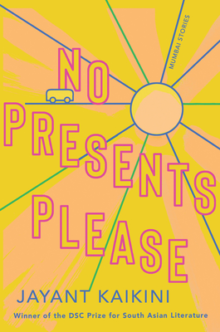
The second book I want to mention is No Presents Please (Catapult, 2020), by Jayant Kaikini and translated from the Kannada by Tejaswini Niranjana. The book’s subtitle is Mumbai Stories and, indeed, the city is vibrantly depicted throughout these sixteen pieces that detail, so lovingly and carefully, the extraordinary moments of ordinary lives. If the stories themselves weren’t so engaging, which they are, the city thrumming along in the background would carry the collection. With myriad variations of tone and topic—jobs, marriages, deaths, encounters, families—these stories illustrate the small hurts and tiny glories of everyday life. Although Kaikini is a celebrated writer, only a tiny fraction of his work has so far appeared in English… fingers crossed for more to come.
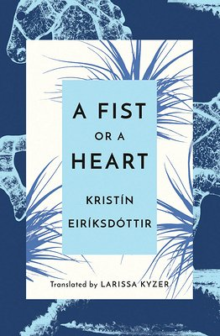
Finally, I had the great pleasure of interviewing Kristín Eiríksdóttir this year for a literary festival in Switzerland, and in preparation I read her novel A Fist or a Heart (Amazon Crossing, 2019), translated from the Icelandic by Larissa Kyzer, and her first work to make its way into English. The book, set in Reykjavík, alternates between two women, Elin and Ellen. The younger Ellen (who is struggling with the legacy of a famous writer father) has written a play, and the older Elin works as the props designer in the theater. The story focuses on the unlikely but shared connection the two women have, though they do not do much sharing. They have a thorny and complicated relationship and they are themselves both thorny and complicated—in that sense, delightful fictional creations. Eiríksdóttir is a poet, and her first two novels were hybrid prose/poetry. A Fist or a Heart is more traditionally prose, but her poetic sensibility clearly drives her writing—the narrative is episodic rather than linear, and images work through juxtaposition. The book’s overall ambiance is one of “dislocation”—of bodies, memories, relationships and this creates a very interesting tension that pulls the reader through an otherwise muted story.
+
Lacey Dunham, fiction editor
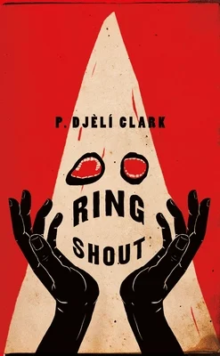
I read more genre-widely this year than usual. Looking back at my book list, I find that monsters were a constant presence. Often dismissed by the strictly literary minded, monster-creatures are situated and alive within the realms of scifi, fantasy, or horror. Yet monsters are also metaphors for what we fear we are or might become. With a global pandemic still impacting lives, the rise in nationalism and authoritarianism, and racism, xenophobia, and anti-queer and trans hatred rearing their ugly collective heads, monsters seem to be everywhere—though perhaps nowhere more than in the human heart.
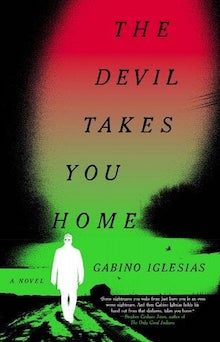
In P. Djèlí Clark’s Ring Shout (Tordotcom, 2020), a group of Black women in early twentieth-century Georgia fight literal monsters called Ku Kluxes arisen from an incantation spewed into the world by D.W. Griffith’s infamous film. In The Devil Takes You Home (Mulholland Books, 2022), Gabino Iglesias’s deeply disturbing borderlands novel, the divide between monstrosity and morality is not always clearcut. Tananarive Due’s The Between, published nearly thirty years ago, alights on the current moment when a man’s rescue from a childhood drowning thrusts him into a realm for neither the living nor the dead as he struggles to protect his family from a white supremacist. Victor LaValle’s The Ballad of Black Tom (Tordotcom, 2016) retells an H.P. Lovecraft story (we all know the issues with Lovecraft) to lay bare the sinister machinations of white racial domination and power. Because I needed a laugh and some pleasant nostalgia (and you might, too), I recommend Andrew Donkin and James Howe’s Bunnicula: The Graphic Novel, an adaptation of the beloved children’s book that returns readers to Chester the cat’s paranoia about the newest household pet, a rabbit with suspicious behaviors, as narrated by the family dog in a delightful visual rendering that had me laughing out loud before bed.
+
Diane Josefowicz, book reviews editor

Last spring, when I felt safe enough once again to travel, the pleasurable novelty of leaving home after months in one place soon gave way to the usual struggles with clocks, calendars, time-tables, and all the other fallible contrivances whose importance had receded—one silver lining—with the onset of COVID-19. As I re-learned those tedious ropes in reality, in my reading I gravitated toward celebrations of mischance, stories that opened unexpected doors and landed me someplace entirely new, often with a shout. One of these yes! novels was Skye Papers by Jamika Ajalon (Feminist Press, 2021), about an unlikely trio of young Black multimedia artists whirling through the 1990s transatlantic art scene. Their adventures reminded me that seeking your truth is serious fun, something I’m looking forward to having more of, now that I’m doing a bit better with clocks and schedules. Meanwhile Jen Fawkes’ story collection Tales the Devil Told Me (Press 53, 2021) offered the different but equally peripatetic pleasure of following Fawkes as she re-reads fairy tales and classic stories in search of new perspectives. What, really, was the deal with Hamlet’s mother and father? Shouldn’t we attempt to imagine more for Rumpelstiltskin? And the witch that baked all that delicious stuff for Hansel and Gretel—what’s her deal? Like the best sort of literary detective Fawkes finds the trapdoors in familiar tales and throws them open to reveal entire worlds.

Two more. New to Liberty by DeMisty D. Bellinger (Unnamed Press, 2022) follows a group of related characters through three generations of upheaval in mid-century America. Although a good deal of the book’s drama consists in figuring out how the characters are connected, the kaleidoscoping stories cohere within a historical framework of persistent structural injustice, and it was Bellinger’s evocation of that framework, in all its tragic persistence and pervasiveness, that I admired most. Finally, I was bowled over by The Song of Youth, a volume of stories by Catalan writer and activist Montserrat Roig (1946-1991), published in 1989 and recently translated into English by Tiago Miller (Fum d’Estampa, 2021). The stories in this slim collection gravitate toward termination dramas, after-the-breakup insights and deathbed revelations that invert the meaning of everything that’s come before. The personal stakes are high, but Roig’s larger quarry is historical and political, and the collection is shot through with hardwon knowledge and weary rage at the repressions of Franco’s Spain.
+
Steve Himmer, editor
This was not my best year for reading. More often than most years I began reading books that through no fault of their own I left unfinished (I hope to get back to them still). In part it was a change to working from home more often and reading less on my commute. Also the world’s pretty overwhelming these days — you may have noticed — and it was a good year for staring into space or into blurry pages. The books that most stuck with me happened at the scale of everyday life, nothing too big or dramatic, paying attention in smaller ways to things that could almost be contained or understood enough to be made sense of rather than overwhelmed. I haven’t checked but I think all this is pretty similar to what I said in our recommended reading last year, which isn’t surprising, all things considered.
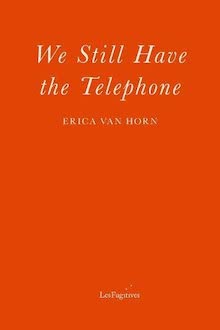
Erica Van Horn’s We Still Have The Telephone (Les Fugitives, 2022) starts with the premise of a woman helping her elderly mother write her own obituary. It sets out from there not via plot or events but through the cataloging and consideration of the details of a long life — the physical presence of years of deliberate mementoes and objects that for one reason or another have not been discarded, memories of childhood, decades of daily rituals and pet peeves and struggles, and all the ways in which our parents can be known to us and be total strangers at once. It’s deeply funny and deeply smart and I’ve already reread it and will again. I followed it quickly with an earlier book of Van Horn’s, By Bus (Ugly Duckling Presse, 2021, which I also recommend.
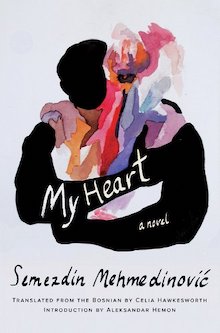
My Heart by Semezdin Mehmedinovic, translated by Celia Hawkesworth, is a novel in triptych that delivers some of the most honest, most moving, most painful writing about marriage and family I’ve ever read. In the first section the narrator describes the experience of his own heart attack; the second considers his relationship with his adult son through a road trip together; and the third is an account of his wife’s decaying memory after a stroke. The novel explores the shared, secret terrain of a long partnership, always a terrain no one knows but the people who have mapped it together, and in this case that secrecy is compounded by being refugees who fled together from a country that no longer exists. When there is only one person who can truly, entirely know how you are, what does it mean when they stop being themself and can no longer access the shared memories that make the two of you whole and make you yourselves?
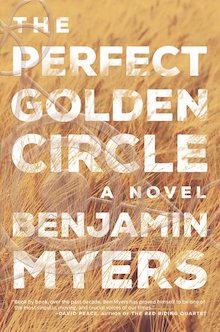
Benjamin Myers’ The Perfect Golden Circle satisfied me in a way somewhat similar to the TV series Detectorists — a great favorite of mine — with its story of two men, unlikely friends, spending the summer secretly laying elaborate crop circles around the countryside and stirring up an increasing widespread reaction. I’ve been a fan of Myers’ fiction for a long time, and while this latest novel shares much with earlier books it’s also far less brutal or violent. He’s often concerned with what men get up to when they need to feel power or take control, but in this case the outlet is to make something beautiful rather than something bloody and at a moment when it has often felt — to me, anyway — increasingly hard to do that, I was grateful for the novel’s reminder of the graceful satisfaction of making something simply because you want it to be done.
+++